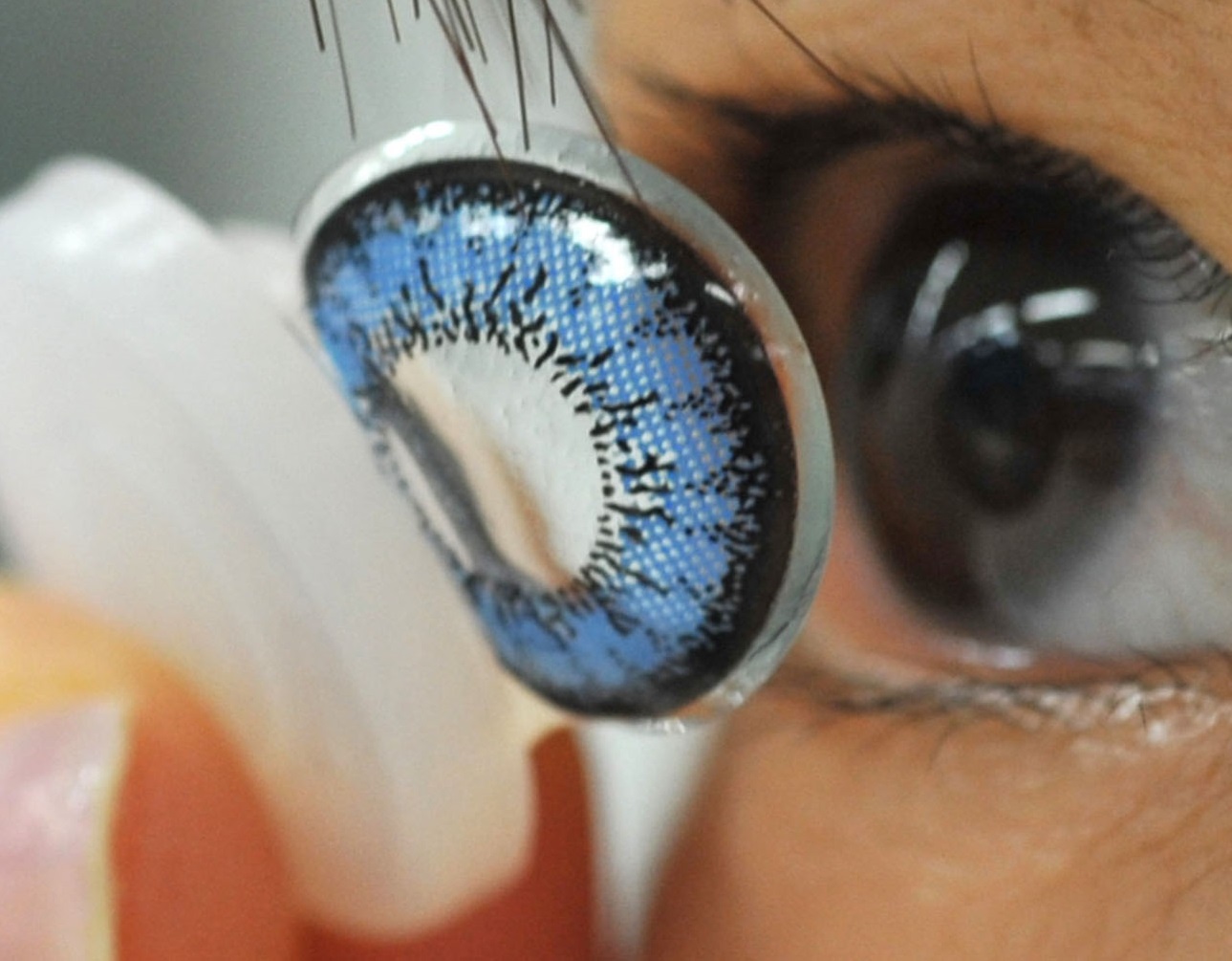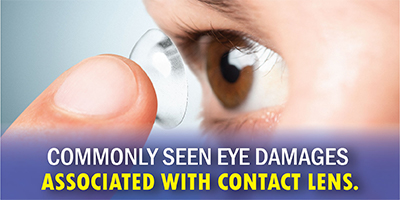There are a number of reported eye damages associated with contact lens. According to EHSToday, around 800,000 eye injuries are reported on the job. Learn about the common injuries and damages to the eyes when wearing contact lenses and how to handle the situation to prevent further complications.
Eye injuries that aren’t dealt with properly can lead to blurred vision, optic nerve damage, computer vision syndrome, and more severe eye damages.
We are going to cover five sections that talk about common damages to eyes that you may get wearing contact lens and how to handle them.

Table of contents
Estimated reading time: 6 minutes
What Are Those Common Eye Damages By Contact Lenses?
1. Corneal Abrasion (Scratched Eye)
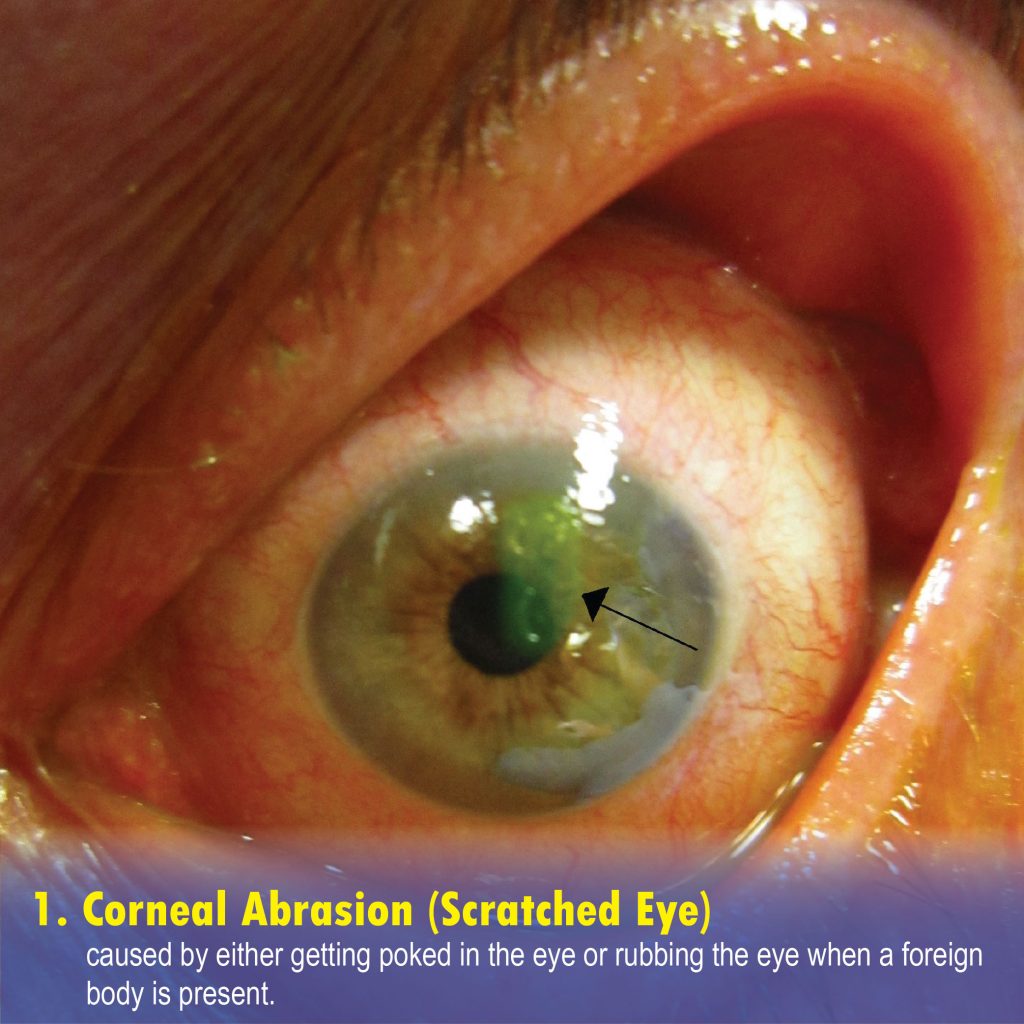
A corneal abrasion or scratched eye can be caused by either getting poked in the eye or rubbing the eye when a foreign body is present. The damage can lead to eye redness and severe sensitivity to light.
It’s essential to handle a scratched eye quickly as germs and bacteria can enter your eye and cause great harm. Infections can also penetrate the scratched surface of your eye and cause problems like visual impairment. Here’s how you can handle it to avoid negative consequences.
- Always try to remain calm and don’t rub your scratched eye, or rinse it with anything (including water or a saline solution).
- Find a small and clean covering and use it to cover your eye without touching the eye.
- Pull up your upper eyelid over your lower eyelid and blink gently to brush away any foreign object, if present.
- Wear sunglasses and see an eye doctor as soon as possible.
Read More: Smart Hygiene Habits to Care for Your Contact Lenses
2. Eye Swelling
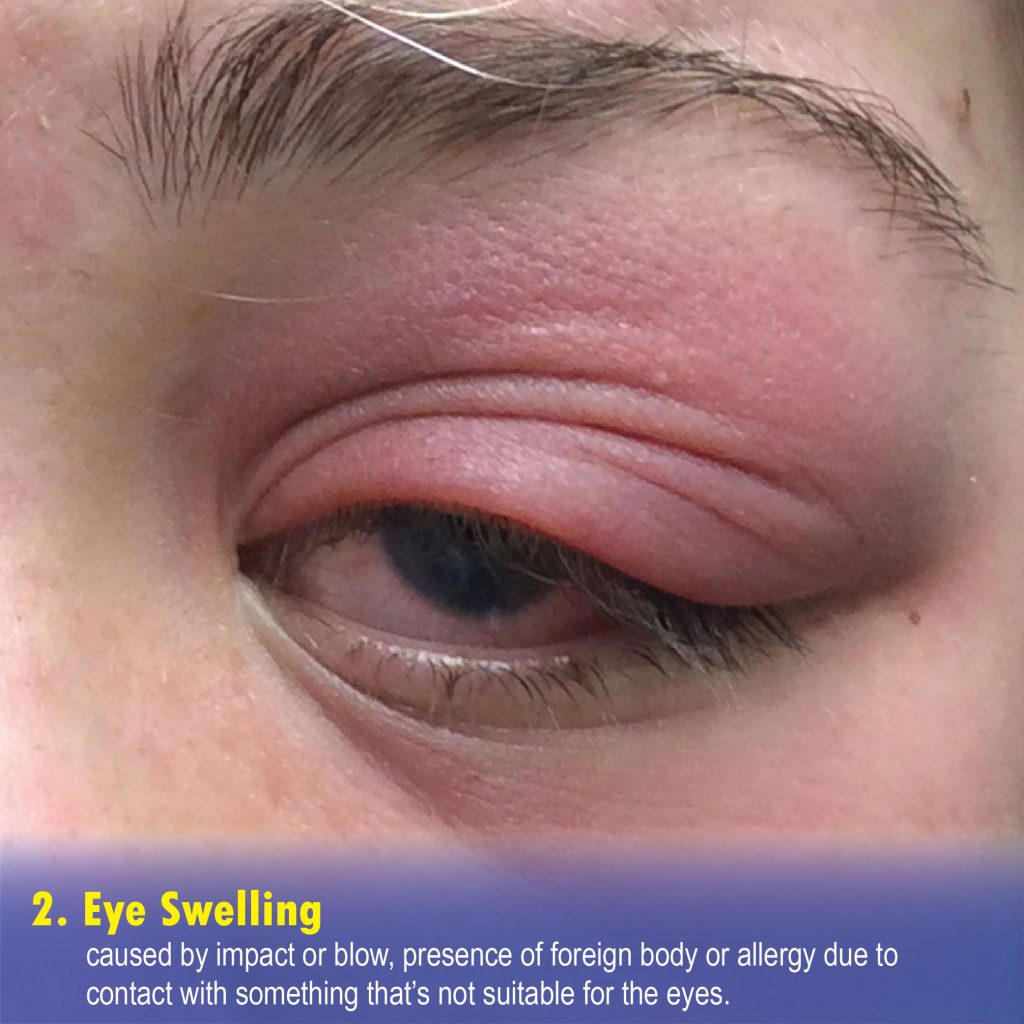
It can be caused by impact or blow, presence of foreign body or allergy due to contact with something that’s not suitable for the eyes. Eye swelling is a pretty common eye injury, and in most cases, it doesn’t require any serious medical attention. Here are some home remedies you can use.
- Stay calm and look for an ice pack.
- Apply the ice pack gently on your swelled eye. Don’t apply any pressure; just put the ice pack on your swollen eye.
- Take 5-10 minutes intervals when putting an ice pack on your eye. Do not prolong the intervals to avoid ice burn.
- After treating your swollen eye with an ice pack, start blinking gently.
- If something feels amiss and the swelling isn’t going away, or if you experience blurred vision, low visual acuity, or other unusual symptoms, see an eye doctor right away to access the damage.
3. Eye Bleeding (Subconjunctival Hemorrhages)
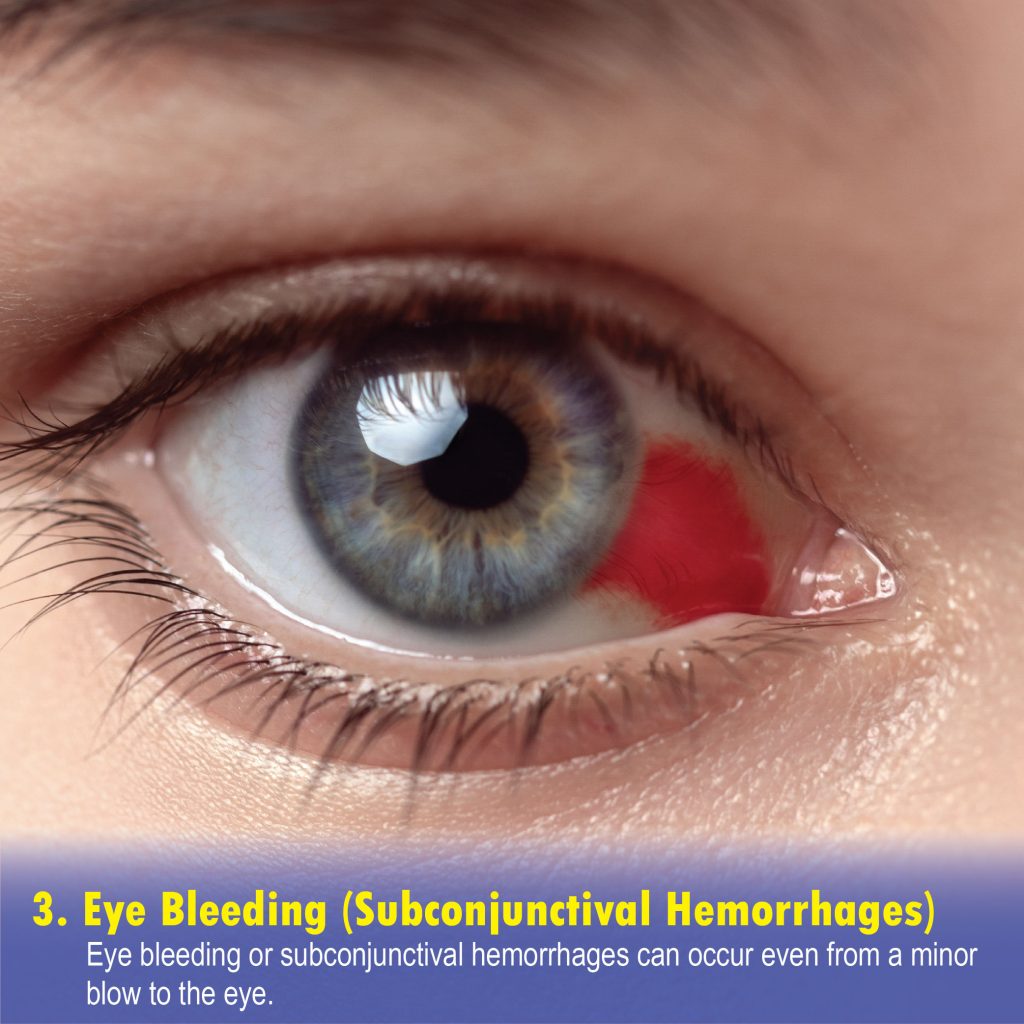
Eye bleeding or subconjunctival hemorrhages can occur even from a minor blow to the eye. Although leakage of blood from eyes looks pretty scary and alarming, it’s usually not as bad as it looks in reality.
Eye bleeding is painless and doesn’t cause any temporary or permanent blindness. But it doesn’t mean you don’t have to provide first aid for the condition. Here’s how to handle this type of damage to the eye.
- Find an ice pack and wrap it with a clean cloth.
- Massage your eye using an ice pack with multiple intervals of around 5-10 minutes.
- Then, visit your nearest eye clinic and book a quick check-up. Doctor may prescribe some medicines, ointments, or eye drops.
4. Chemical Burns/Splashes in the Eye
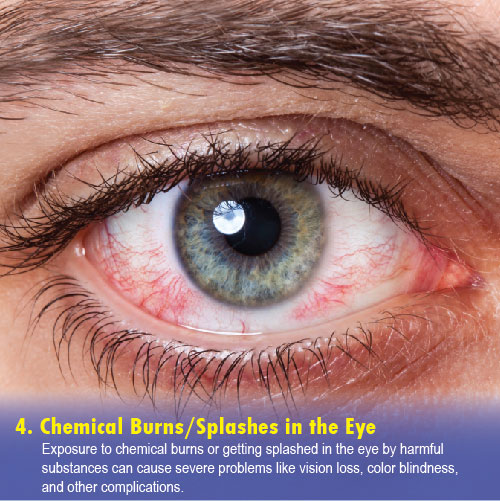
Exposure to chemical burns or getting splashed in the eye by harmful substances can cause severe problems like vision loss, color blindness, and other complications. However, rubbing your eyes after using hand sanitizer can also result in chemical burns. Although chemical burns are common, one must know how to handle it before receiving any medical aid. Here’s how to deal with chemical burns/splashes when you encounter one.
- Keep your eyes wide open and start flushing them with plenty of clean, warm water.
- Don’t close your eyes as it can push the harmful substance to go deeper inside your eyes.
- You should flush your eyes with clean, warm water for about 15-20 minutes straight. Then, head towards your nearest hospital’s emergency unit or eye clinic.
5. For All Other Commonly Reported Eye Damages By Contact Lens
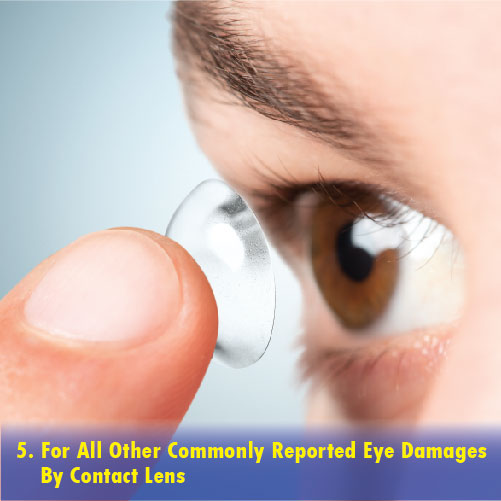
For all other commonly reported eye injuries, here’s how to handle the situation immediately.
- Refrain from apply any sort of pressure on the injured eye and avoid touching or rubbing it.
- If there is any object stuck in the eye, don’t try to remove it on your own.
- Don’t apply any ointment, medication, or eye-drops to the eye.
- Don’t take any prescribed medication.
- And lastly, contact an ophthalmologist right away or go to your nearest emergency center.
Conclusion
Understanding the common eye damages related to contact lens will give you a heads-up and serve as a precaution to prevent unwanted damage to the eyes. Stay calm when injury occurs and use your first aid knowledge to minimize injury and further damage or complications.
Read More:

